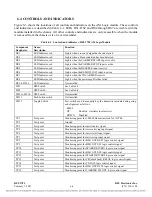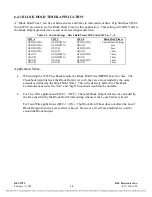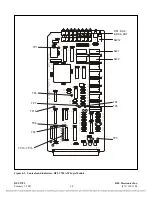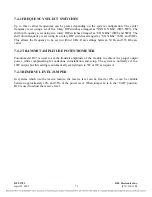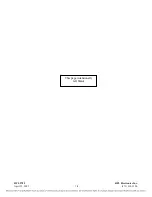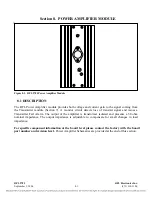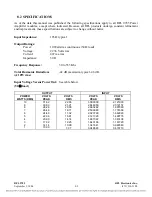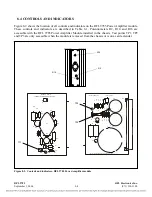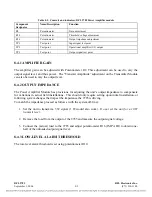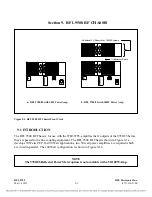
7.3
THEORY OF OPERATION
The RFL 9785 Transmitter module is a programmable powerline carrier transmitter utilizing a Direct
Digital Synthesizer (DDS). The DDS is used to generate a precise sine wave signal by reading a sine
look-up table stored in ROM. A block diagram of the transmitter module is shown in Figure 7-2, a
block diagram of the DDS is shown in Figure 7-3, and a schematic diagram of the transmitter module
is shown in figure 7-4.
Configuration
Switches
Field
Programmable
Gate Array
LED Indicators
Precision
50 Mhz Osc
Direct Digital
Synthesizer
(DDS)
Low-Pass
Filter
Gain
Adj
Carrier
Out
Control
Signals
Optional Voice Input
Figure 7-2. Transmitter module block diagram
The output of the look-up table is connected to a D/A converter which generates the sine wave. As the
input to the look-up table is incremented, the output of the table via the D/A generates the sine wave.
Thus, the input to the look-up table is related to the phase of the output sine wave. The phase
information is stored in the phase register.
7.3.1
DIRECT DIGITAL SYNTHESIZER FUNDAMENTALS
A simplified block diagram for a basic DDS is shown in Figure 7-3. The circuit has two inputs, a
master clock and a phase step. The master clock should be considerably higher in frequency than the
highest frequency to be generated by the DDS. Once each clock cycle, the phase register is
incremented by the specified phase step amount. The phase register is configured to roll over at 360
o
.
The output of the phase register is sent to a lookup table, which generates the value of the sine function
for the given phase. The output of the lookup table is in turn sent to a D/A converter, which produces
the desired output voltage. In this manner, as the phase is gradually increased from 0
o
to 360
o
, the D/A
produces a single sine wave cycle. By allowing the phase register to roll over, the output remains
smooth and over time, all discrete phase angles will be sampled.
RFL 9785
RFL Electronics Inc.
April 25, 2005
7-3
(973) 334-3100






